Early Dynastic to Old Kingdom Egypt Rule
1/30
There's no tags or description
Looks like no tags are added yet.
Name | Mastery | Learn | Test | Matching | Spaced |
|---|
No study sessions yet.
31 Terms
Old Kingdom Period
2686-2182 BCE, the "age of pyramids" (third-sixth dynasties)
Khufu
Egyptian pharaoh who built the great pyramid, most famous pharaoh of the old kingdom

Lower Egypt
The northern part of ancient Egypt, closest to the Mediteranean Sea
Early Dynastic Period
a political designation that takes into account the dynastic rulership within the Egyptian state, 3000-2686 BCE (followed the Uruk Period) (first-second dynasties)
Djoser
Pharaoh, had the first step pyramid built at his tomb in Saqqara
Saqqara
The location of the stepped pyramid, the earliest pyramid constructed in Egypt. In later periods, continued to be used as a sacred burial area.
Giza
An ancient Egyptian city; the site of the Great Pyramid and other tombs
Khafre
A pharaoh who built a pyramid at Giza, carved Sphinx, son of Khufu
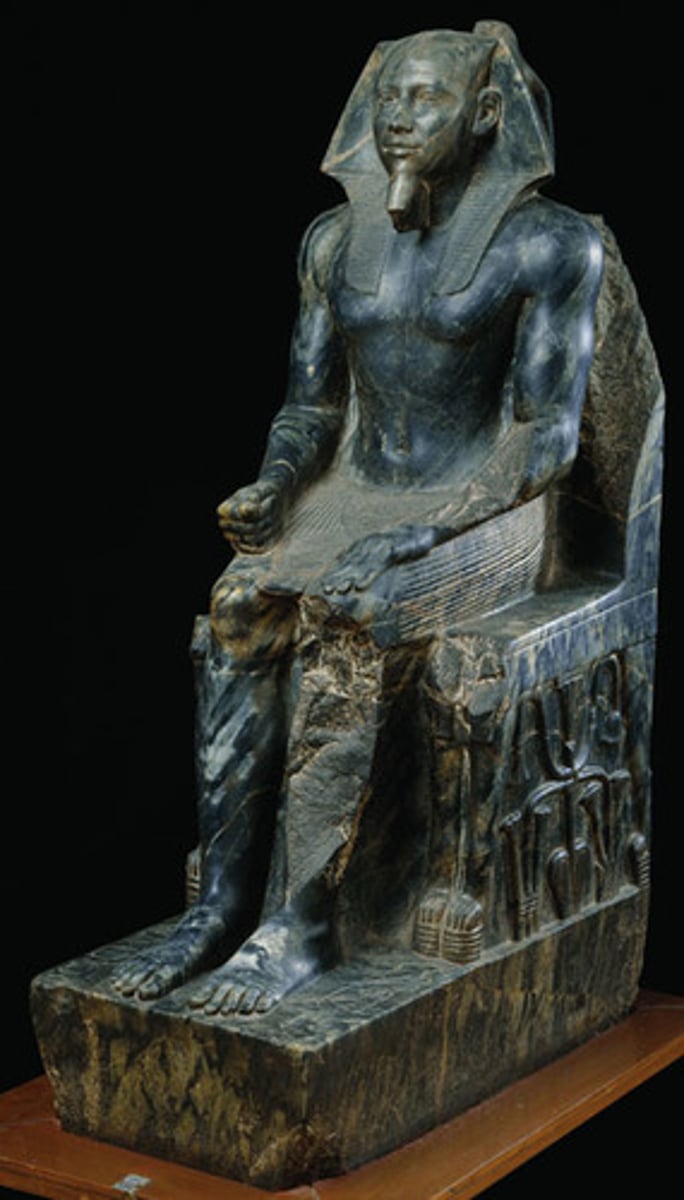
menkaure
Pharaoh after Khufu; built the third and smallest pyramid at Giza
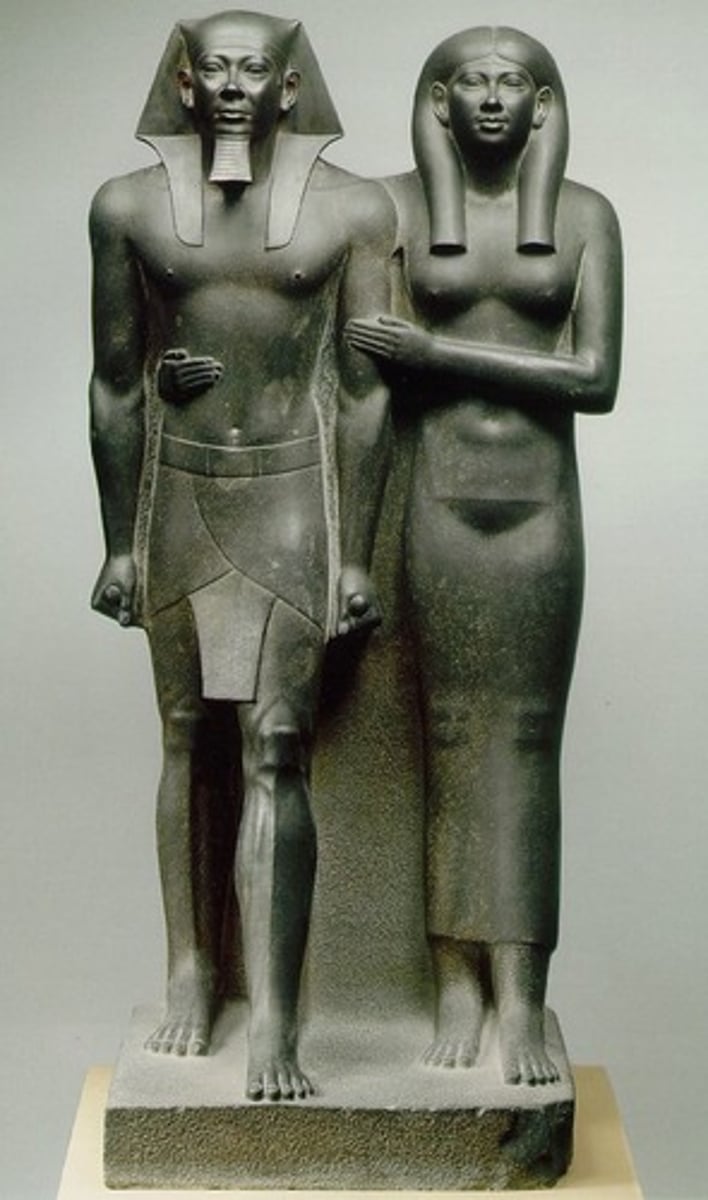
Osiris
Egyptian god of the underworld and judge of the dead
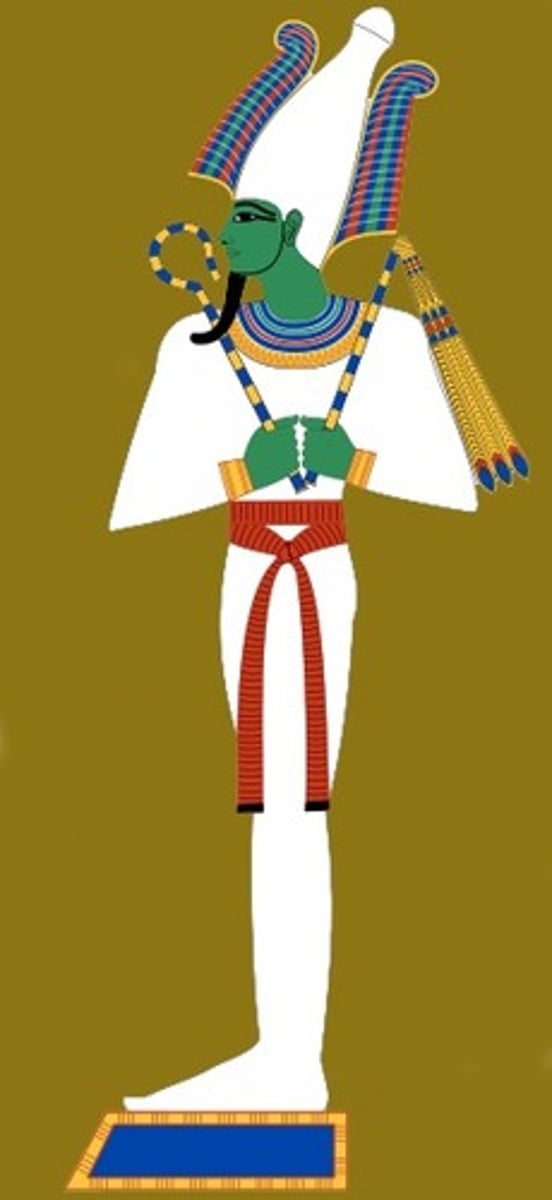
Ka
In ancient Egypt, the immortal human life force
Ka Statue
a statue of a person's soul/afterlife force, often has upraised arms, Djoser had a famous Ka Statue
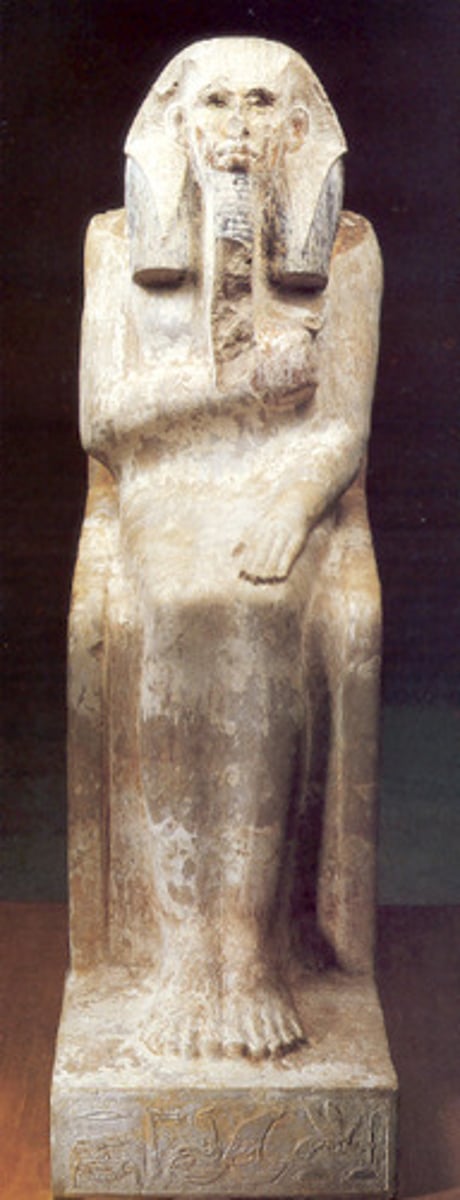
Dynastic Rule
Rule where power is passed by blood
Pharaoh
a king of ancient Egypt, considered a god as well as a political leader
Polytheism
belief in more than one god
afterlife
life after death
book of the dead
A collection of spells and prayers in scrolls that Egyptians studied to obtain life after death
mummification
the preservation of dead bodies by embalming and wrapping them in cloth
funerary mask
A mask made by placing wax on the deceased's face to take their image. When it was dry, it was taken off and stored in the family shrine
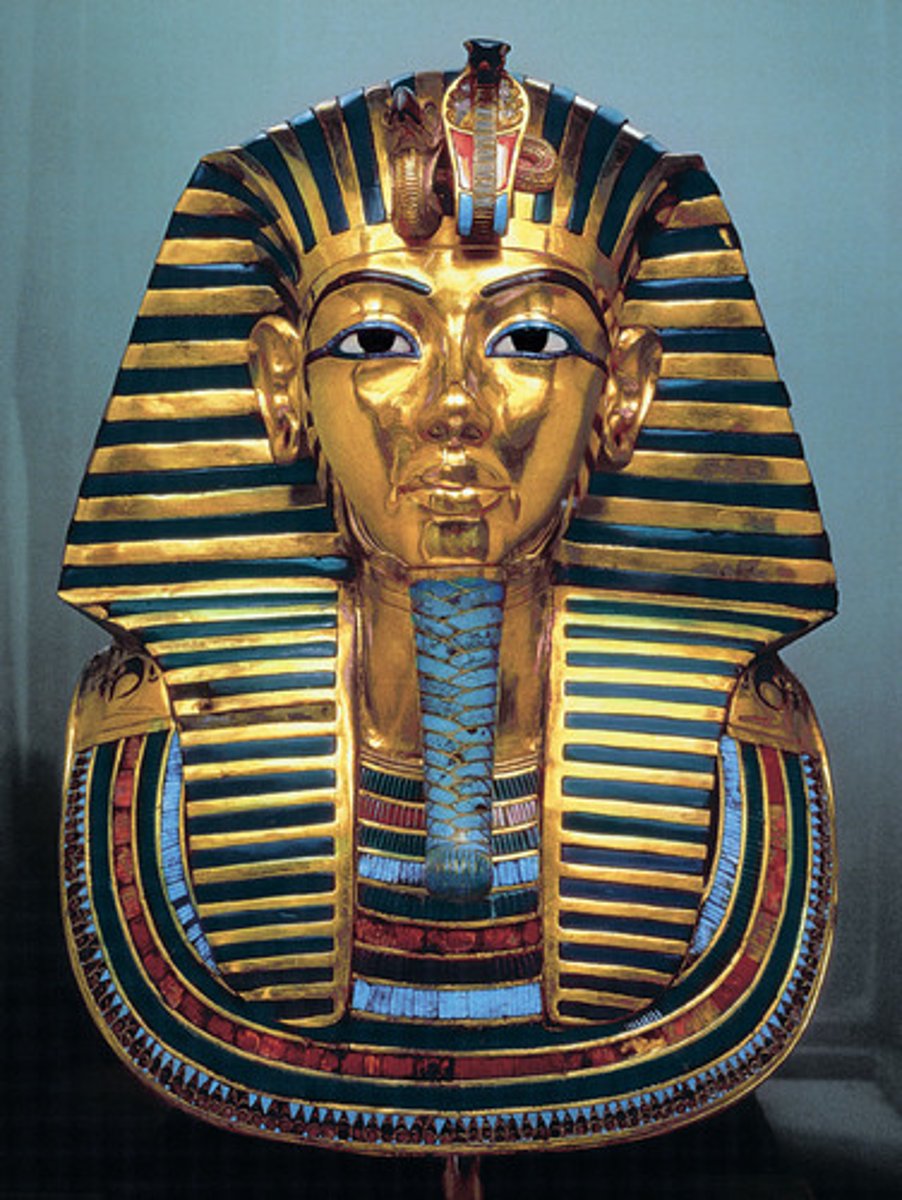
coffin
a box in which a dead person is buried
sarcophagus
a container for human remains
tomb
a large vault, typically an underground one, for burying the dead.
funerary art
any work of art forming, or placed in, a repository for the remains of the dead.
funerary architecture
structures designed to be built above the contemporary ground level for the purpose of burial
mastaba
a massive, flat-topped rectangular tomb building with slanted side walls; built of either mud brick or cut stone
serdab
A small concealed chamber in an Egyptian mastaba for the statue of the deceased/Ka Statue
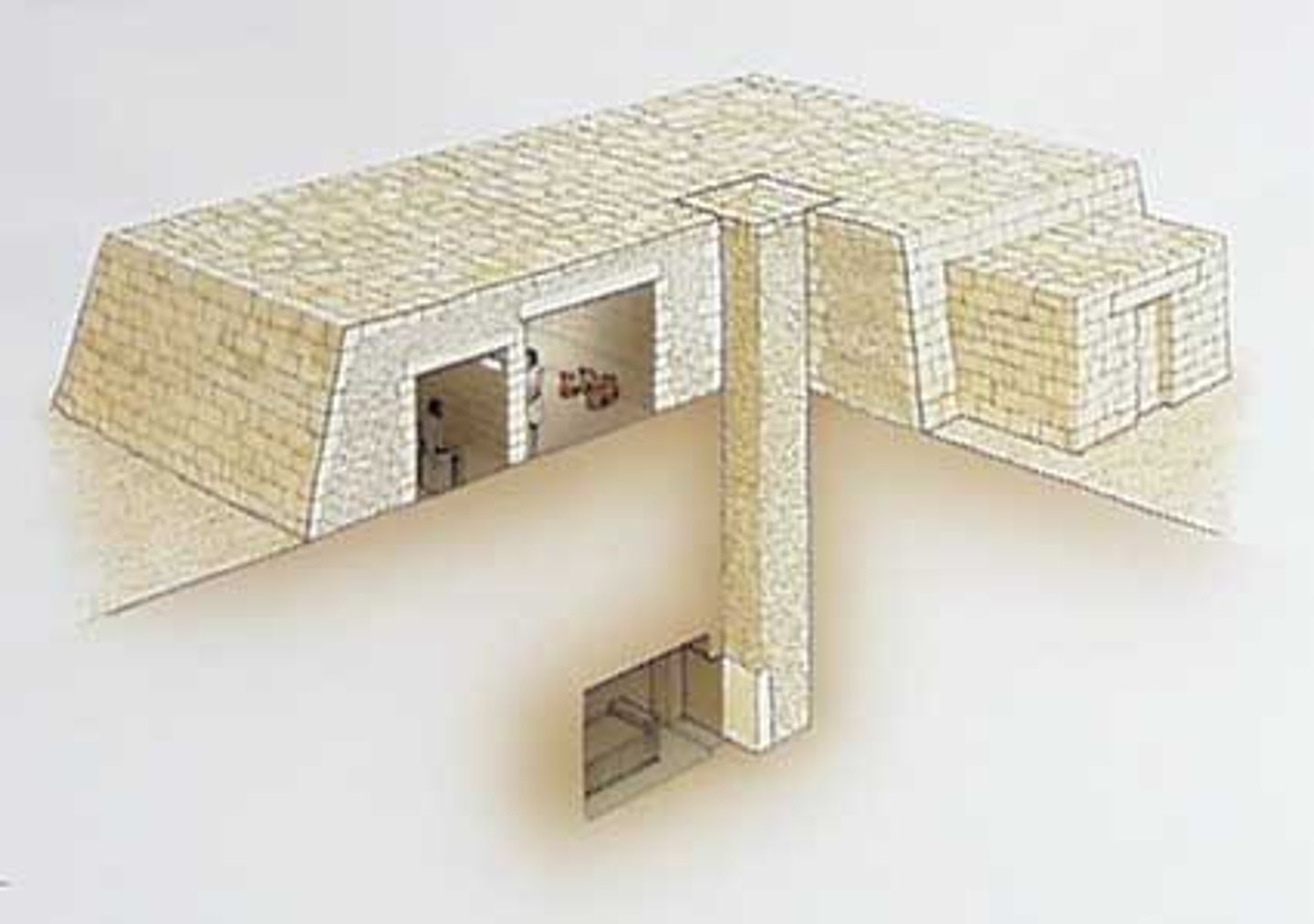
stepped pyramid
an architectural structure that uses flat platforms, or steps, receding from the ground up, to achieve a completed shape similar to a geometric pyramid (Djoser's funerary complex)

pyramid
Huge, triangular shaped burial tombs of Egyptian pharaohs built during the Old Kingdom
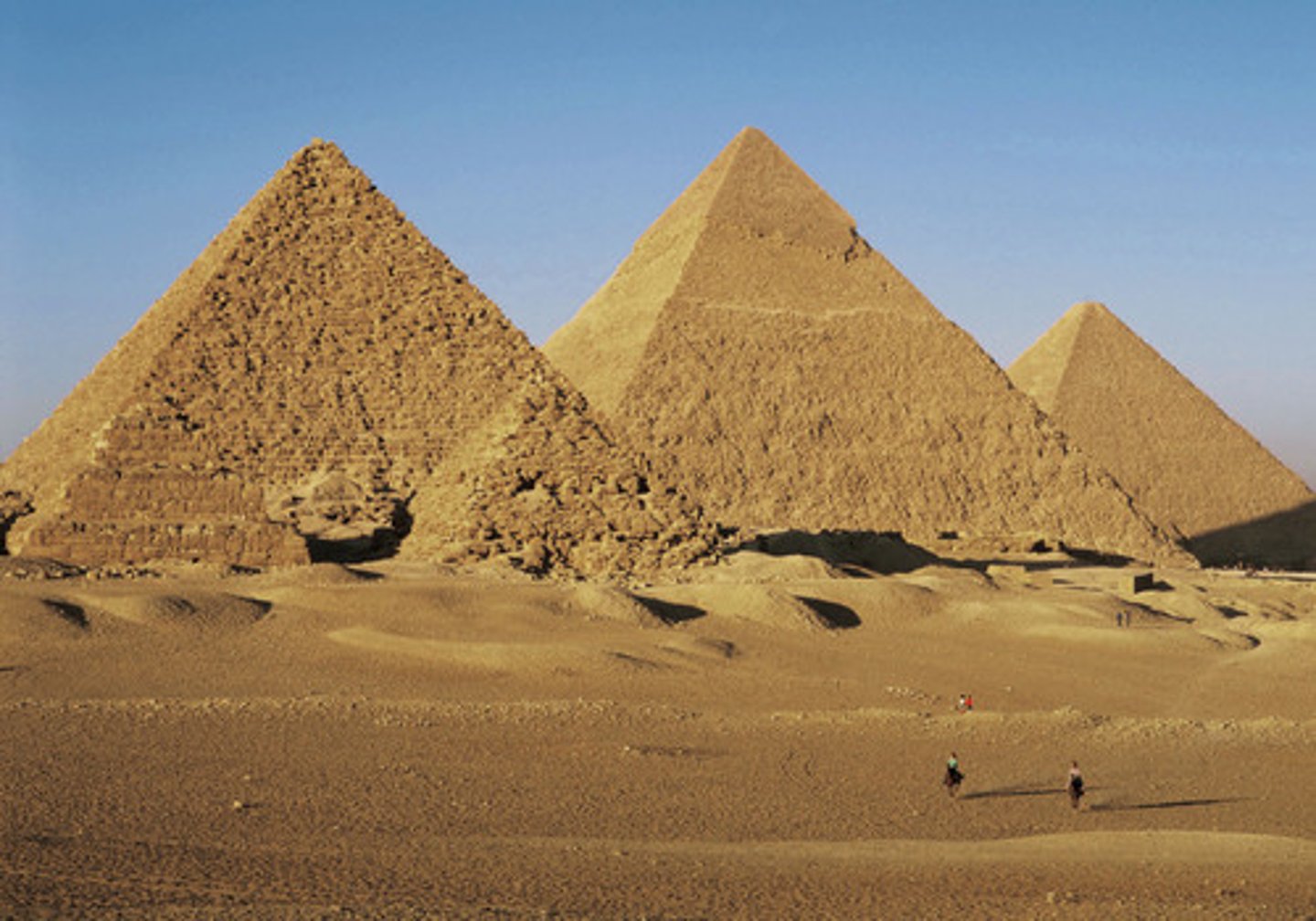
sphinx
A mythical Egyptian beast with the body of a lion and the head of a human.
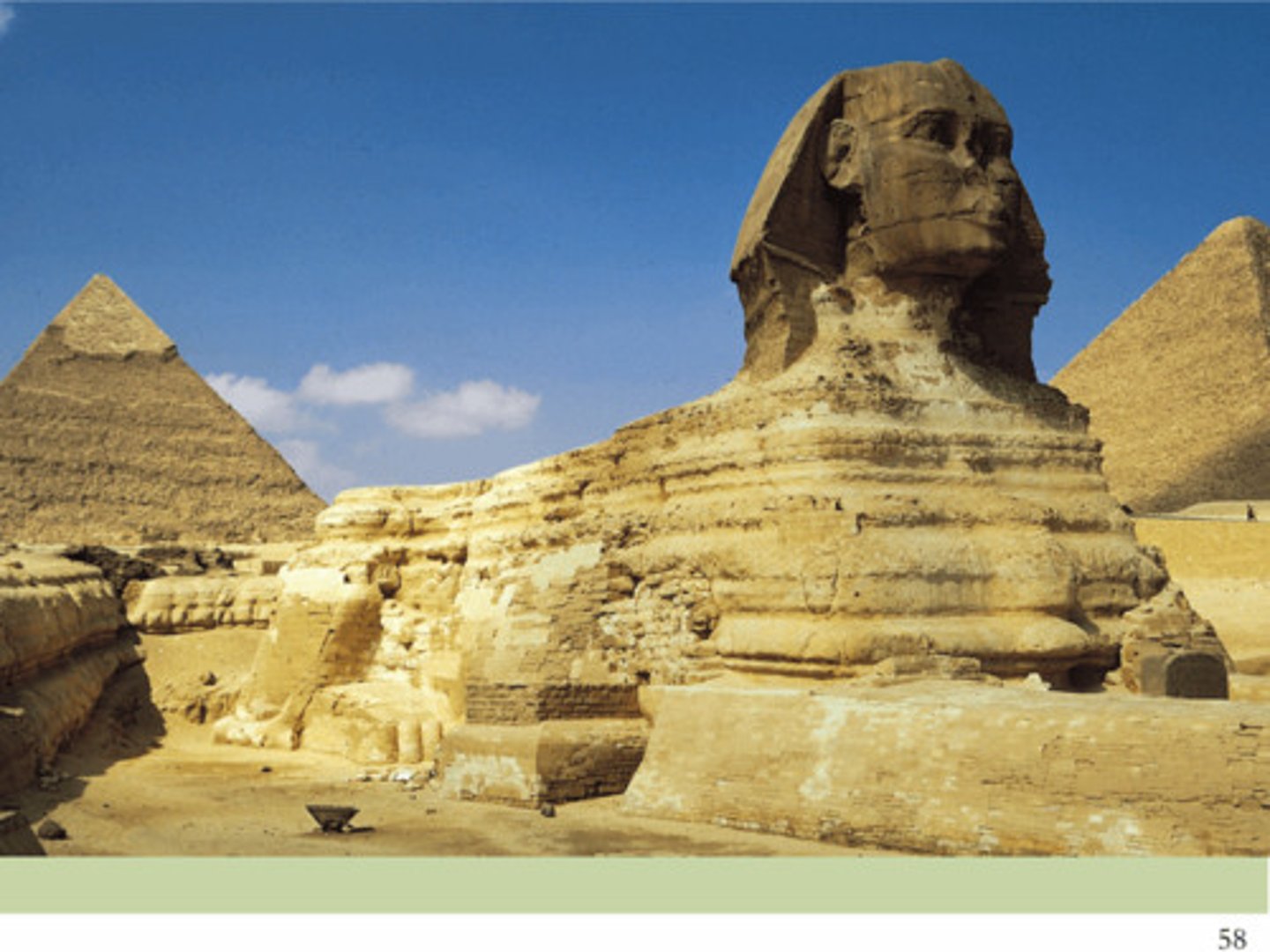
proportions
the ratio between any two dimensions of an object
canon of proportions
a set of ideal mathematical ratios in art used to measure the various parts of the human body in relation to one another